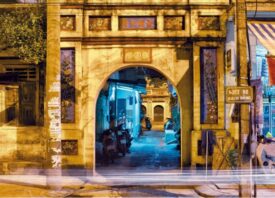Search this site
Spellbinding Night Photography from Around the World

From the historic archives of NASA to the edges of the planet Earth, this collection of extraordinary night photography explores the magical reaches of the starry sky. Travel across Finnish Lapland, through the American West, to the ancient landscapes of Botswana, across the deserts of Sinai and Israel, and up through the mountains of Alaska.

‘Earth and Space’ Photo Book is Full of Astonishing Vistas from NASA’s Archives
Earth and Space by Chronicle Books is a collection of the most unforgettable photos from NASA’s treasured archives. Prefaced by Bill Nye of Science Guy stardom and introduced by author Nirmala Nataraj, Earth and Space takes our planet as its point of departure, moving sequentially through the universe and ultimately resting on clusters of galaxies colliding at a distance of 5.4 billion light years from where we stand.

Kerry Tasker’s Celestial Night Photography Makes Planet Earth Look Like the Moon
“It’s almost like the environment knows you’re there but doesn’t care,” says Anchorage-based photographer Kerry Tasker of the Alaskan terrain. The land is feral and ferocious; he’s dropped his camera from a perilous cliff, and the bitter cold has annihilated its batteries. Still, he’s been torn time and again from the safety of home into the rugged wilderness, standing cold and alone, under a charcoal sky dotted with faraway stars.

Neil Folberg Photographs the Deserts of Sinai and Israel Illuminated by Starlight
Under the shroud of night, Jerusalem-based photographer Neil Folberg traverses Galilee and the Negev and Sinai deserts in Israel and Egypt alone and by foot, watching as the stars and clouds dance across the sky. From the late 1990s until the early 2000s, he spent four years of sunsets and sunrises capturing the shadows as they descended silently upon the historic terrain.

Eerie Night Photography by Reuben Wu Will Make You See the Planet in a Whole New Light
“My nights are full of silence and the occasional howl of coyote,” the photographer Reuben Wu tells me. His series Lux Noctis has taken him to some of the most isolated regions in the American West, as well as remote spots in Europe and South America, under the cover of darkness. He flies a drone to light his way, illuminating sections of the landscape at will.

Tiina Törmänen Captures the Magic of Wintertime in Finnish Lapland
When she was a little girl, photographer Tiina Törmänen built castles out of snow. She spent her childhood in Finland’s Southern Lapland, surrounded by lakes and forests, and each winter, she dug tunnels, doorways, and rooms, illuminated by flickering candlelight. Winter is still her favorite season. When the snow falls, she bundles up and wanders into the unknown terrain.

Behold Ancient African Trees in the Night Photography of Beth Moon
The San Francisco-based photographer Beth Moon has spent more than a decade of her life hunting down our planet’s oldest trees, chasing them to their isolated and solitary bowers at the edges of civilization. After devoting fourteen years to shooting ancient trees by day, the photographer embarked on Diamond Nights, for which she captured the looming plants under the black shroud of midnight and illuminated by a dusting of twinkling stars. The darkness, she remembers, was so thick that she was unable to see her own hands.



